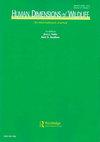扩大人类与野生动物共存的挑战范围及其对保护的影响:以肯尼亚莱基皮亚为例
IF 1.7
4区 环境科学与生态学
Q2 BIODIVERSITY CONSERVATION
引用次数: 0
摘要
本案例研究旨在扩大对影响人类与野生动物共存的因素的调查范围,而不仅仅是直接有形的野生动物影响和旗舰野生动物物种的挑战。对肯尼亚莱基皮亚县的马赛牧民进行了采访,内容涉及野生动物面临的挑战,特别是对野生动物向家畜传播疾病的看法。回答揭示了许多疾病的经验以及野生动物和牲畜疾病之间的多种感知关联。人们的反应与之前的研究一致,即大象严重损害了牧民的福祉,但绝大多数人的担忧都被表达为影响日常活动的恐惧,而不是以更直接的量化方式表达。调查结果并没有显示出对狮子的担忧,尽管他们把重点放在了学术研究和保护倡议上。答复表明,需要更广泛地看待人类与野生动物的共存,以包括标志性野生动物以外的物种,并认识到,除了可量化的事件(如人类死亡、牲畜被捕食)之外,主观关切(如恐惧、疾病传播给牲畜)也可能影响对野生动物保护的态度。本文章由计算机程序翻译,如有差异,请以英文原文为准。
Expanding the scope of challenges to human-wildlife coexistence, and the implications for conservation: a case study of Laikipia, Kenya
ABSTRACT This case study sought to broaden the scope of inquiry into factors influencing human-wildlife coexistence beyond immediately tangible wildlife impacts and challenges with flagship wildlife species. Maasai pastoralists in Laikipia County, Kenya, were interviewed regarding challenges with wildlife, particularly perceptions of disease transmission from wildlife to domestic livestock. Responses revealed experiences with numerous diseases and multiple perceived associations between wildlife and livestock disease. Responses aligned with prior research that elephants severely compromise pastoralists’ well-being, but concerns were overwhelmingly articulated as fear affecting daily activities rather than in more directly quantifiable terms. Findings did not indicate concerns with lions, despite their focus in scholarship and conservation initiatives. Responses indicated the need to view human-wildlife coexistence more broadly to include species beyond iconic wildlife, and to recognize that subjective concerns (e.g., fear, disease transmission to livestock) in addition to quantifiable events (e.g., human deaths, livestock predation) might affect attitudes toward wildlife conservation.
求助全文
通过发布文献求助,成功后即可免费获取论文全文。
去求助
来源期刊

Human Dimensions of Wildlife
Environmental Science-Nature and Landscape Conservation
CiteScore
4.40
自引率
12.50%
发文量
33
期刊介绍:
Human Dimensions of Wildlife is devoted to the study of social considerations in fisheries and wildlife management.
 求助内容:
求助内容: 应助结果提醒方式:
应助结果提醒方式:


